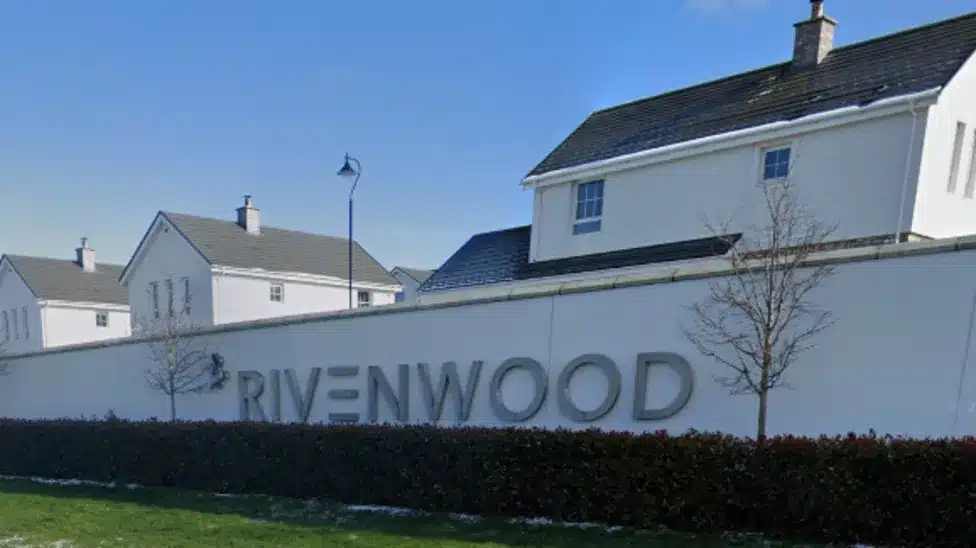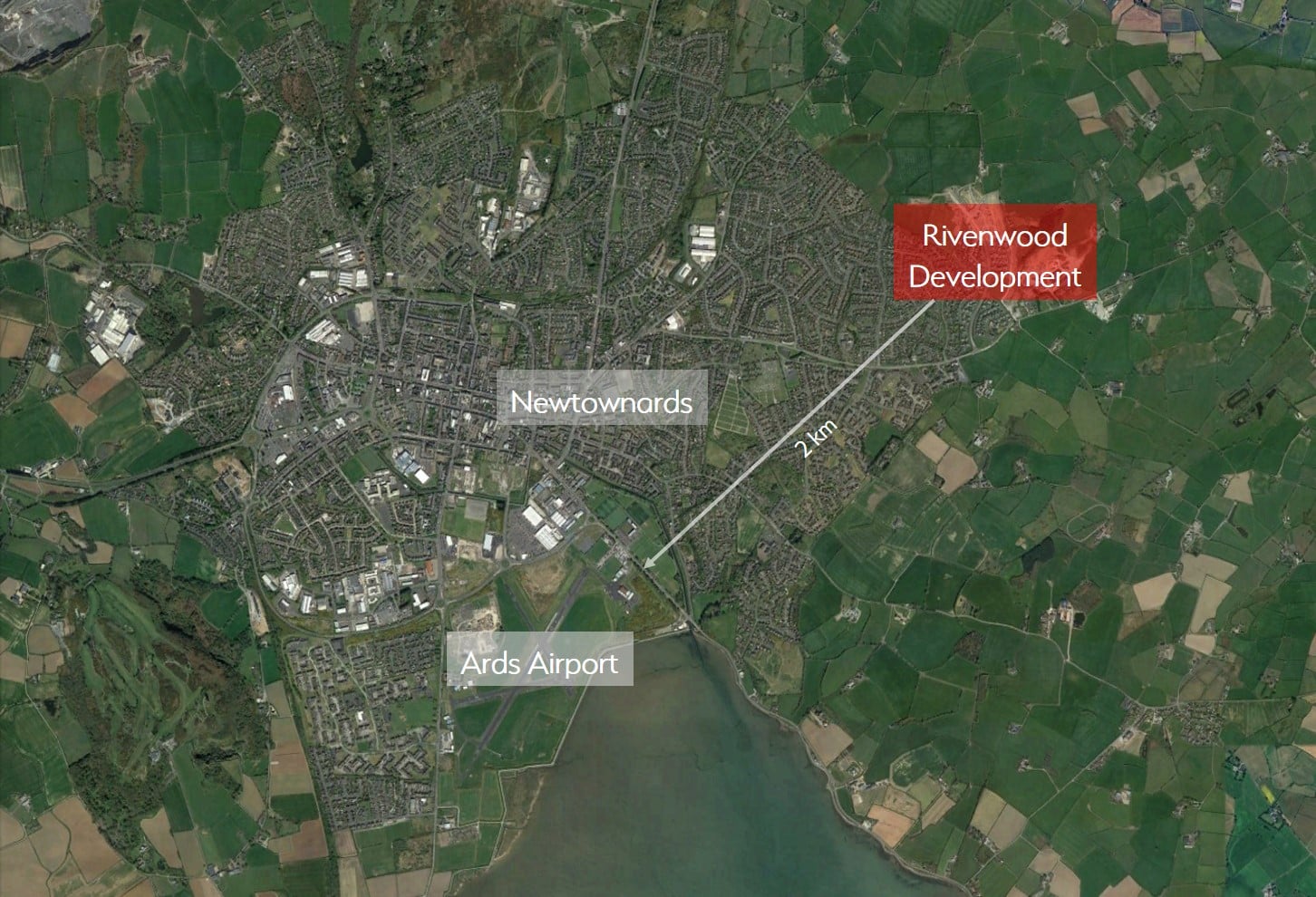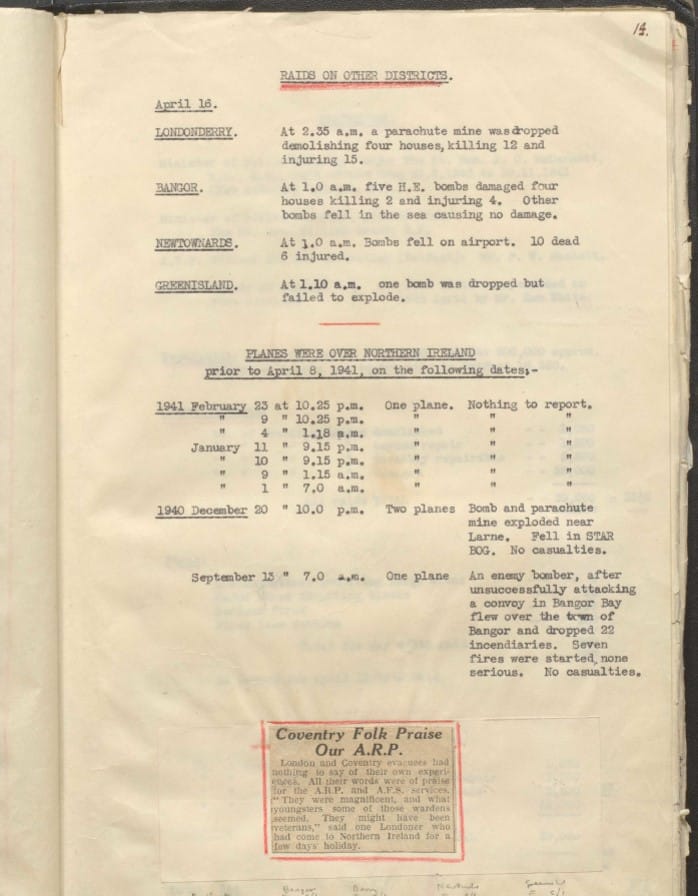Hundreds of residents were evacuated from their homes in Newtownards, County Down on Thursday 15th August after the discovery of a WWII Unexploded Bomb (UXB) on a construction site.
The 500kg (1,100lb) SC-500 bomb was discovered at the Rivenwood housing development on Movilla Road, and Military experts strategically planned the detonation to minimise any damage to surrounding buildings and houses by constructing a sand-filled structure around it.
The controlled explosion took place at about 15:38 BST, police said.
“The munition found, which I can now confirm was identified as being an air-dropped SC-500 German bomb from World War Two, was understood to have been in and around 83-years-old, but still posed a significant risk to public safety, even after all this time.” North Down and Ards District Commander Superintendent Johnston McDowell said.

500kg (1,100lb) SC-500 WWII UXB found at the Rivenwoods housing development at Newtownards. Image source: Belfast Live.
Superintendent McDowell said this was a “highly complex operation” with a disposal team comprised of members of the Army’s 321 EOD and search squadron.
“They were also assisted by other emergency services and partners, who all provided expert knowledge in managing the high-risk emergency situation.
“I would like to express my sincere thanks to all our personnel involved, who worked day and night this week to keep the public safe. The success of this operation is testament to the level of skill our military colleagues have.” he added.
The disposal operation is similar to that carried out in March 2021 when army bomb disposal experts were called following the discovery of a 1,000kg WWII bomb in Exeter. In that case, around 2,600 properties in the area were evacuated while the device was inspected, assessed and later disposed in-situ.
Click on the following link to see a video of the bomb being detonated in Newtownards – video source: BBC News.
What happened in Newtownards?
Army bomb disposal experts and emergency response services were called following the discovery of a 500kg (1,100lb) SC-500 WWII UXB at the Rivenwood housing development on Movilla Road in Newtownards.
Outside of the Rivenwood housing development in Newtownards. Image source: Google Maps.
Fraser Partners, the developer of the site, said the device was discovered by construction workers during some ground works for a new phase of the development – where 40 homes are currently under construction. Following the detonation, the developer told the BBC that the Army had informed him that some solar panels had been damaged on the nearby homes, but no windows were broken.
The Police Service of Northern Ireland (PSNI) said the device was to be “dealt with on site”, and the decision followed discussions at great length about whether the device should be removed.
Following the controlled explosion, Superintendent McDowell said: “I appreciate the scale of disruption caused while we worked to ensure the safety of everyone in the area and I would like to thank those affected for their patience and understanding.”
History of WWII bombing in Newtownards
The Rivenwood housing development is situated on Movilla Road in Newtownards, which is a town located approximately 9km east of Belfast – which was heavily targeted by the Luftwaffe during WWII.
On 16th April 1941, at the same time the Belfast Blitz was happening, the town of Newtownards was also targeted by the Luftwaffe – with Newtownards Airport (formerly Ards Airport) hit.
Ards Airport was used as the headquarters of RAF’s 231 Squadron, and was guarded by soldiers of 70th Battalion Royal Inniskilling Fusiliers. The squadron used Westland Lysanders and Curtiss P-40 Tomahawks, and took part in patrols along the Irish border plus exercises with the Army.
Extract from a war diary, 7th Battalion Royal Welch Fusiliers – 16th April 1941. Image source: WartimeNI.
The Rivenwood housing development is located approximately 2km south-west of Ards Airport which was targeted, and due to the inaccuracy of some Luftwaffe raids – some bombs fell across the town’s surroundings which have since been developed into residential areas.
The development area is situated approx. 1.75km north-east of Newtownards with the area of the present Rivenwood development historically comprising open fields, several farms and rough grassland on the formerly rural outskirts of the town.
Close proximity of the Rivenwood housing development to Ards Airport in Newtownards, which was targeted during WWII. Image source: Google Maps.
Newtownards is recorded as having been attacked, with reports of bombs dropped on the present Ards Airport, resulting in ten people dead and six injured.
Towns surrounding Beflast, including Newtownards, Bangor and Greenisland were either targeted intentionally during the Easter Belfast Blitz on 15/16th April 1941, or suffered from opportunistic attacks and jettisoning of bombs by aircraft returning from the city.
Bombing records describing attacks on surrounding towns during the Belfast Easter Raid, including Ards Airport – 16th April 1941. Image source: Internal Resource.
Click on the following link to read more about the bombing history and UXO risk in Belfast.
This is an evolving news story and more information will be added when it becomes available.
How can 1st Line Defence help?
We would always recommend that for any construction or development activity, be it on land or water, that the risk of encountering UXO should be considered before any intrusive ground works commence.
The first stage of the UXO Risk Mitigation Strategy we follow is a UXO Risk Assessment, which a historical desktop study to determine a level of risk – and it also provides recommendations of risk mitigation measures should they be required.
1st Line Defence can provide everything from Preliminary and Detailed UXO Risk Assessments through to UXO Surveys or UXO Disposal, whatever your needs – we’re here to help and are experts in our field.
If you would like more information or some general advice about UXO risk, contact one of our Sales Team on +44 (0) 1992 245020 or info@1stlinedefence.co.uk.















